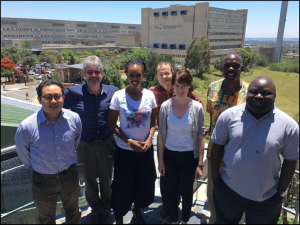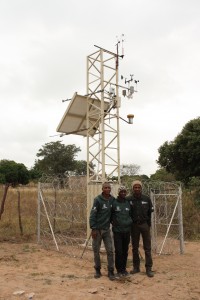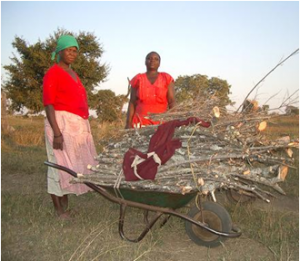Theme leaders: Mark Collinson and Wayne Twine
Problem statement
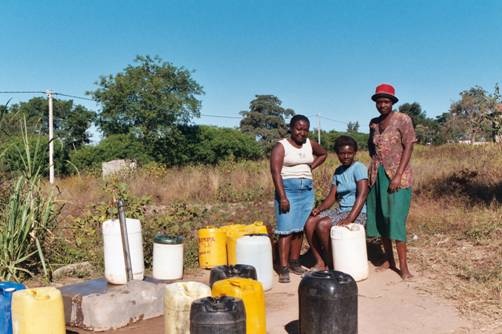 Poverty remains an unresolved burden for the majority of rural households, with significant negative implications for health and well-being. While ill-health, food insecurity, and malnutrition are outcomes of poverty on the one hand, they are also constraints on the ability of households to escape poverty on the other. Poverty also heightens household vulnerability to the impacts of shocks and stresses such as HIV/AIDS and environmental change, to which rural households are increasingly being exposed. Nevertheless, some households do manage to escape or remain out of poverty, even in the face of shocks and stresses, while others do not. Aspects of rural livelihoods such as social connections, use of the local natural environment, and engagement in off-farm livelihood strategies such as labour migration, are well studied and have been shown to have positive implications for health and well-being. Nevertheless, household, community and environmental level factors which promote or constrain household resilience and the ability to ascend out of poverty are complex, interactive, and remain poorly understood. Deeper understanding of household livelihoods in this context is thus essential for informing policy and programmes aimed at promoting health and social development in transitioning rural societies which are exposed to multiple shocks and stresses
Poverty remains an unresolved burden for the majority of rural households, with significant negative implications for health and well-being. While ill-health, food insecurity, and malnutrition are outcomes of poverty on the one hand, they are also constraints on the ability of households to escape poverty on the other. Poverty also heightens household vulnerability to the impacts of shocks and stresses such as HIV/AIDS and environmental change, to which rural households are increasingly being exposed. Nevertheless, some households do manage to escape or remain out of poverty, even in the face of shocks and stresses, while others do not. Aspects of rural livelihoods such as social connections, use of the local natural environment, and engagement in off-farm livelihood strategies such as labour migration, are well studied and have been shown to have positive implications for health and well-being. Nevertheless, household, community and environmental level factors which promote or constrain household resilience and the ability to ascend out of poverty are complex, interactive, and remain poorly understood. Deeper understanding of household livelihoods in this context is thus essential for informing policy and programmes aimed at promoting health and social development in transitioning rural societies which are exposed to multiple shocks and stresses
CURRENT PROJECTS
Migration, Urbanisation and Health in a Transition Setting – The Migrant Health Follow-up Study Oct, 2017
Collaboration with Brown University in Providence, USA led by PI Professor Michael White
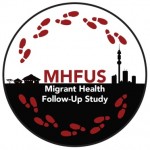 The Migrant Health Follow-up Study seeks to better understand relationships between migration, urbanisation, and health in a transition setting through following-up migrants who leave the Agincourt study area in rural Mpumalanga, usually to access employment. The project draws on the long-standing repository of personal and household data collected through by the Agincourt Health and Demographic Surveillance System (HDSS). The Agincourt HDSS has monitored the health and demographic dynamics of a population of approximately 116,000 individuals of the Bushbuckridge Municipality, since 1992. The study has recruited a new longitudinal cohort of approximately 3,000 individuals from the rural sub-district, which will include migrants and permanent residents. The cohort will be followed for a period of 5 years. The research is designed to show how migration and urbanisation changes risk factors for health conditions and access to treatment, and to establish whether barriers to care are created by migration. The findings will have direct policy implications for South Africa, while also providing substantive and methodological lessons for a range of scientific concerns in Low- and Middle-Income Countries.
The Migrant Health Follow-up Study seeks to better understand relationships between migration, urbanisation, and health in a transition setting through following-up migrants who leave the Agincourt study area in rural Mpumalanga, usually to access employment. The project draws on the long-standing repository of personal and household data collected through by the Agincourt Health and Demographic Surveillance System (HDSS). The Agincourt HDSS has monitored the health and demographic dynamics of a population of approximately 116,000 individuals of the Bushbuckridge Municipality, since 1992. The study has recruited a new longitudinal cohort of approximately 3,000 individuals from the rural sub-district, which will include migrants and permanent residents. The cohort will be followed for a period of 5 years. The research is designed to show how migration and urbanisation changes risk factors for health conditions and access to treatment, and to establish whether barriers to care are created by migration. The findings will have direct policy implications for South Africa, while also providing substantive and methodological lessons for a range of scientific concerns in Low- and Middle-Income Countries.
The MRC/Wits Agincourt team, led by Professor Mark Collinson, have been awarded a R01 research grant from the National Institutes of Health (NIH), USA to fund this 5-year study. The project is in collaboration with the Population Studies and Training Center (PSTC) of Brown University, under the leadership of Principal Investigator, Professor Michael White. It builds on long-standing relationships and successful research endeavours between scientific personnel at the two institutions.
Determinants and consequences of socio-economic dynamics Oct, 2017
Collaboration with Brown University in Providence, USA
The HDSS meticulously tracks asset ownership in households which is used to examine the dynamics of household poverty, in particular how chronically poor households manage to climb out of poverty. Research findings indicate that factors improving asset scores vary significantly. The poorest households tend to improve socioeconomic status through government grants and female labour migration, and are more resilient to shocks and stresses if they use available natural resources for fuel and dietary supplements. Better-off households improve socioeconomic status through local employment and male labour migration. In an analysis of migration and its role in the well-being of rural households, we have found that temporary migration may be employed as a household strategy to improve the socioeconomic position of the origin household. This area of investigation is ongoing and the results of this work are in preparation for journal article submission.
Fact sheet on Migration and Settlement Change – whats happening in the MRC/Wits-Agincourt Unit HDSS study area?
The Multi-centre Analysis of the Dynamics of Internal Migration And Health (MADIMAH) project Oct, 2017
Collaboration with INDEPTH Migration, Urbanisation and Health Working Group
The MRC/Wits Agincourt team is involved in collaborative research with the INDEPTH Network in the area of migration and health. The INDEPTH Migration, Urbanisation and Health Working Group (MUHWG) committee members are Professor Mark Collinson (Group Leader: MRC/Wits Agincourt Unit), Professor Philippe Bocquier (Université Catholique de Louvain, Belgium), Dr Carren Ginsburg (MRC/Wits Agincourt Unit) and Dr Donatien Béguy (UN Habitat). The Working Group has two substantive aims 1) to showcase migration by studying determinants; 2) to understand how migration affects health and wellbeing. Technical aims of the Working Group include the use of HDSS data to run Event History (longitudinal) models through developing widely applicable data transformations and analytic methods for application in single centre and multi-centre analyses.
The MUHWG has focused in the past few years on progressing the Multi-centre Analysis of the Dynamics of Internal Migration And Health (MADIMAH) initiative. Following the publication of a peer-reviewed volume in 2009 entitled “The dynamics of migration, health and livelihoods. INDEPTH Network perspectives”. Collinson, M., Adazu, K., White, M., and Findley, S. (eds.) Surrey: Ashgate, the MADIMAH project was launched in 2011. The aim of MADIMAH is to produce comparative studies on questions concerning migration and health using Health and Demographic Surveillance Systems (HDSS) data from INDEPTH member centres located in Africa and Asia.
The following INDEPTH HDSS member centres are currently participating in MADIMAH research activities: Nouna HDSS, Nanoro HDSS and Ouagadougou HDSS (Burkina Faso); Kilifi HDSS, Kisumu HDSS and Nairobi HDSS (Kenya); Manhica HDSS (Mozambique); and Agincourt HDSS and the Africa Health Research Institute (South Africa).
The MADIMAH project comprises three streams of multi-centre research: the first focuses on determinants of migration, in particular the relationship between internal migration and human capital (MADIMAH 1). The second encompasses a study of migration, mortality and epidemiological transition (MADIMAH 2). A new stream (MADIMAH 3), which commenced in 2016, involves a study of child mortality, migration, parental presence and household composition in Africa and Asia.
MADIMAH 1 research activities have included:
1) A multi-centre research paper on education as a determinant of internal migration in 8 HDSSs published in Demographic Research (Ginsburg, C., Bocquier, P., Béguy, D., Afolabi, S., Augusto, O., Derra, K., Odhiambo, F., Otiende, M., Soura, A., Zabre, P., White, M.J., Collinson, M.A., (2016). Human capital on the move: Education as a determinant of internal migration in selected INDEPTH surveillance populations in Africa. Demographic Research. 34(30): 845-884. DOI: 10.4054/DemRes.2016.34.30);
2) A data release on INDEPTH iShare data repository Multi-centre Analysis of the Dynamics of Internal Migration and Human Capital in Selected INDEPTH Centres in Sub-Saharan Africa – Release 2016. Provided by the INDEPTH Network Data Repository. 2016. <http://www.indepth-network.org>. doi:10.7796/INDEPTH.GH004.MIG.2014.v1.;
3) A training manual detailing MADIMAH data management techniques aimed at data managers, analysts and students (Bocquier, P., Ginsburg, C., Herbst. K., Sankoh, O., Collinson, M.A. (2017). A training manual for Event History Data Management using Health and Demographic Surveillance System data. BMC Research Notes. 10: 224. DOI 10.1186/s13104-017-2541-9).
MADIMAH 2 research activities include:
1) A multi-centre publication on migration and all-cause mortality in 9 HDSS centres published in Social Science & Medicine (Ginsburg, C., Bocquier, P., Béguy, D., Afolabi, S., Augusto, O., Derra, K., Herbst. K., Lankoande, B., Odhiambo, F., Otiende, M., Soura, A., Wamukoya, M., Zabre, P., White, M.J., and Collinson, M.A. (2016). Healthy or unhealthy migrants? Identifying internal migration effects on mortality in Africa using Health and Demographic Surveillance Systems. Social Science & Medicine. 164 (2016), 59-73.).
2) A research paper examining internal migration and mortality by cause of death in 4 HDSSs (Africa Centre, Agincourt, Kisumu, Nairobi) in Kenya and South Africa. The write-up of this paper is currently underway.
The MADIMAH project has a strong capacity development and training focus aimed at:
– Consolidating and standardising HDSS centre databases to prepare data for multi-centre, comparative analyses
– Training HDSS scientists in the statistical programmes and analytic methods (event history analysis) required to perform analyses
– Familiarising HDSS scientists with literature on migration, mortality and the epidemiological transition
– Guiding discussions on the interpretation of analytic findings
MADIMAH Workshop participants November 2016 (L-R): Andrew Tomita, Mark Collinson, Marylene Wamukoya, Philippe Bocquier, Carren Ginsburg, David Obor, Sulaimon Afolabi
Training has been facilitated through a series of workshops involving scientists from participating HDSS centres. The workshops have aimed to train participants in methods and analytic techniques to apply to single-centre publications on migration, and to contribute as co-authors to multi-centre publications.
Household structure and vulnerability/resilience
Collaboration with Maryland, Missouri, Colorado at Boulder and Brown Universities, USA
The life-cycle of households are changing due to changing migration patterns and increasing mortality of prime age adults. This cluster uses qualitative studies triangulated with surveillance-based analyses to investigate changing household structure and composition. Changing social roles of fathers, mothers and older adults are examined as well as the importance of meaningful links to networks beyond the household. Migration of under-five children is significantly related to household poverty. There is an important household role for women over 60 years shown by the fact that 15% of households had a at least one fostered child and 6% at least one maternal orphan, while 27% of households with an over sixty year old woman included a fostered child and 16% a maternal orphan.
A high-tech scientific research installation has been erected on the edge of Agincourt village. It is called an Eddy Covariance Flux Tower. This flux tower was erected as part of the Adaptive Resilience of Southern African Ecosystems (ARS AfricaE) project under the Science Partnerships for the Assessment of Complex Earth System Processes (SPACES) programme. Profs. Bob Scholes and Wayne Twine of Wits University are part of a research consortium that includes the Council for Scientific and Industrial Research (CSIR) and various South African and German Universities collaborating on the ARS AfricaE project. This project investigates the coupled carbon and water cycles of natural and disturbed savanna ecosystems in southern Africa. It aims to deepen the knowledge on how the natural environment functions in rural communities in southern Africa. This knowledge is crucial for understanding the link between ecosystem and climate, and how changes in land use may impact the climate in the future. The research would help us understand changes in greenhouse gas concentrations and how they influence agricultural and ecosystem productivity. The technique used is called the eddy covariance technique, which measures how much carbon dioxide (CO2), water vapour, and energy moves between the land surface and the atmosphere. Other additional measurements including climate parameters (such as temperature, humidity, rainfall, atmospheric pressure) are made to get more information about processes of the savanna ecosystem. The flux tower houses a range of very sophisticated equipment used to make these measurements. The Agincourt eddy covariance flux tower is one five erected in South Africa. The oldest is the one near to Skukuza in the Kruger National Park, which was established in 2000. The Agincourt tower, which was erected on the southern edge of Agincourt village in 2015, enables the collection of ecological flux data in a human-modified landscape. The tower and its instrumentation are maintained by the CSIR. The staff of the Public Engagement Office of the Agincourt Unit is thanked for their support and assistance with the community engagement process of this project. There has been a delay in the results of this project powing to theft of some components of the eddy covariance flux tower.
PROJECTS WITH COMPLETED FIELDWORK
The Natural Environment and Resilience – SUCSES (Sustainability in Communal Socio-Ecological Systems) Oct, 2017
Collaboration with APES (School of Animal, Plant and Environmental Sciences) at Wits, and University of Colorado at Boulder, USA.
Previous work shows that food security is threatened by adult mortality, and that greater reliance on natural resources is often a coping response of households impacted by such crises. In this longitudinal study, we examine how natural resources are used to offset the impacts of household shocks, the degree to which this buffers households against adversity, and how environmental change might erode the resilience of households. A cohort of 600 households within the HDSS was established in 2010 to examine livelihood strategies and outcomes. This is linked with environmental surveillance, both climatic and ecological, in the study villages. In 2014, the fifth annual round of the household livelihoods survey was completed.
Migration, Livelihoods and Health
Collaboration with Brown University, University of Colorado at Boulder, USA: Université Catholique de Louvain, Belgium
Analysis of the health and demographic surveillance system data has shown that rural households are dependent on labour migration for socio-economic well-being, especially female migration in poorer households and male migration in better-off households. Labour migration involves a household splitting, with the migrant moving to the work-place for the majority of each year. If they become sick the normal pattern is to return to the rural household and possibly die there. The contribution of AIDS and TB among returned migrants to the overall increase in crude death rate in the 2000 to 2006 period was 84% for males and 49% for females.
A study covering the period 2000 – 2011 revealed a high prevalence of temporary migration amongst males, with females increasingly participating in temporary movement. Such temporary migrants were found to have a higher probability of mortality, and analysis has revealed positive links between temporary migration and both infectious disease (ID) and non-communicable disease (NCD). For example, over the period 2008–11, we found that 66 % of male and 78% of female deaths in younger adults (18-44 years) ages were attributable to IDs, whereas 13% (both male and female) deaths were attributable to NCDs.
Given the historical pattern of labour migration across the region, these findings call urgently for health services that bridge long distances and span different settlement types to maintain continuity of care. To establish the feasibility of contacting and interviewing migrants at their place of work we conducted a pilot study in 2012. We contacted and interviewed 93% of the chosen sample (N=363). The pilot study provided us with some insights into the relationship between migration (temporary or permanent), the distance moved and selected behavioural and health outcomes. For example, amongst long-distance migrants there was a lower rate of using either government or private clinics (possibly due to their better overall health), but when in need of health care, these migrants would more typically access private health clinics.
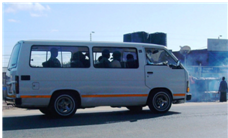
On the INDEPTH platform, seven HDSS centres were involved in comparative studies which were published a peer-reviewed volume in 2009. Despite the diversity of contexts from which the data originated (rural/urban, African/Asian) and the variation in time threshold used to define migration (varying from one to six months of continuous residence), a relatively regular age structure for migration was found. The largest group are young adults (aged 20-24 years), sometimes accompanied by children under five years. The age patterns indicate that key components of the migration profiles are labour migration of young adults, children migrating with parents, and, to lesser extents, marriage formation, the dissolution of households and households moving to access better services. Three studies of migration and livelihoods (in rural Thailand, South Africa and Bangladesh) have shown that out-migration from origin HDSS communities generally contributed to improved living conditions at the places of origin by way of agricultural production, household assets, and educational progression. The findings from three studies that focused on migration and morbidity/mortality, highlighted the potentially negative consequences of migration on health in urban Kenya, rural Mozambique and rural Vietnam, which contrasted the beneficial socio-economic impacts of migration seen above. The healthy migrant hypothesis was demonstrated by returning migrant mothers in rural Kenya whose under-five children displayed improved survival rates compared to children of non-migrant, local mothers.
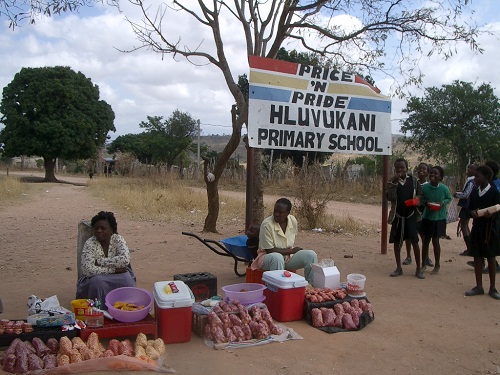
Collaboration with Brown University, USA
The HDSS meticulously tracks asset ownership in households which is used to examine the dynamics of household poverty, in particular how chronically poor households manage to climb out of poverty. Research findings indicate that factors improving asset scores vary significantly. The poorest households tend to improve socioeconomic status through government grants and female labour migration, and are more resilient to shocks and stresses if they use available natural resources for fuel and dietary supplements. Better-off households improve socioeconomic status through local employment and male labour migration. In an analysis of migration and its role in the well-being of rural households, we have found that temporary migration may be employed as a household strategy to improve the socioeconomic position of the origin household.


